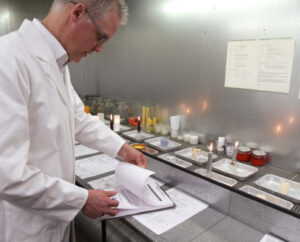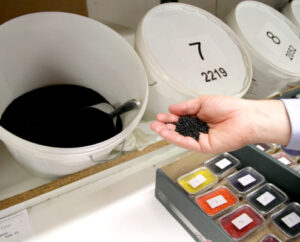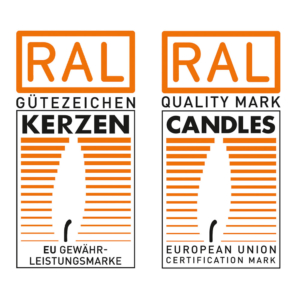quality-certified
raw materials!
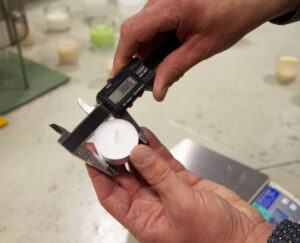
These specific quality assurance and test specifications apply to tealights.
Within this scope, the “Tealights” product needs to meet the requirements of the Quality Mark for Candles.
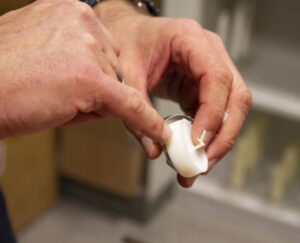
When viewed without technical aids, the surface of the fuel must be free of impurities.
The wick must be centred.
Standard tealights have the following dimensions (fuel without container, without wick holder, without wick):
Height: max. 17 mm
Diameter: 36–39 mm
Larger dimensions and an excessively thick wick can produce a flame that is too large for which the dimensions of a portable hearth may then be too small, which may have negative consequences.
The fuel of tealights is within a rigid container. The container must not be significantly deformed, destroyed or ignited by the flame.
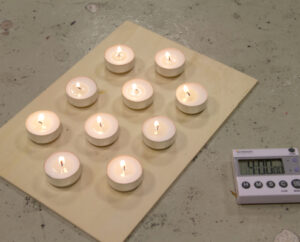
After lighting, the tealight must have a steady flame and burn evenly.
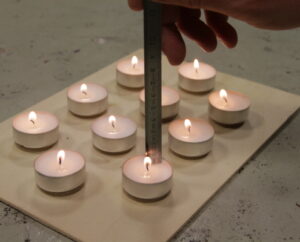
After burning starts, the flame must be at least 14 mm high until just before the flame extinguishes itself.
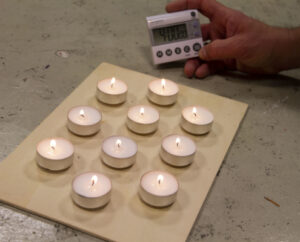
The flame must burn without producing visible soot for at least 4 hours.
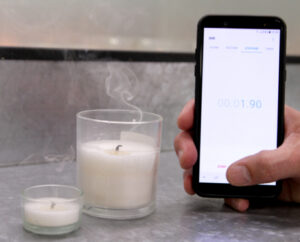
After the flame has been extinguished, the tip of the wick will normally glow slightly; this is associated with some release of smoke. This process must be completed within 10 seconds.
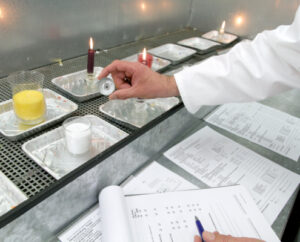
The flame may extinguish itself at the end of the burning process only when there remains just a small amount of fuel in the container.
10 tealights must each be subjected to routine testing in accordance with Sections 3-2.1.1 to 3-2.1.2 and 3-3.2 to 3-3.9, with the exception of Section 3-3.7 b.
The requirements are considered met if satisfied on average by the 10 tested tealights, i.e. if the mean value of all individual measurements meets the requirements and nothing is specified to the contrary in the relevant sections.
The number of samples in relation to production output is coordinated with the external quality assurance institute.
The height, diameter and weight of the test specimen—without container, without wick holder, without wick—are measured and recorded in mm or g.
Visual inspection
Test according to ASTM F2417-11 (5.4) (plastic container flammability test) (simplified as follows: Containers are subjected to a defined flame for 10 seconds, after a further 30 seconds the flame must go out)
Routine testing of the burning properties of tealights (flame height, soot properties (visual inspection according to Section 3-3.7 a), burn time, fuel residue, smoking time) is carried out according to the following burning cycle:
Continuous burning until self-extinguishing.
After a burn time of approx. 90 minutes, the smoking time is determined. To do so, the flame is extinguished and the smoking time measured in accordance with Section 3-3.9. Immediately after measurement, the tealight is relit and the continuous burning process continued.
The burning process should take place on a heat-resistant, non-combustible support surface. The thermal conductivity of this surface should be as low as possible, so that its influence on the burning properties is as small as possible. Burning directly on surfaces such as metal or tiles is therefore not appropriate.

| Flame height at least 14 mm | requirement met |
| Flame height sometimes less than 14 mm | requirement not met |
If a maximum of 1 tealight does not meet this requirement, another 10 tealights are tested. Of these, all tealights must comply with the requirement to pass the test.
| Burn time is at least 4 hours | requirement met |
| Burn time is less than 4 | requirement not met |
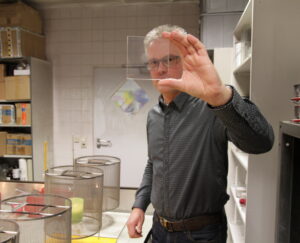
The wax residue must be checked after the flame has extinguished itself. It must not exceed 2 g.
| Wax residue of up to 2 g | requirement met |
| Wax residue greater than 2 g | requirement not met |
